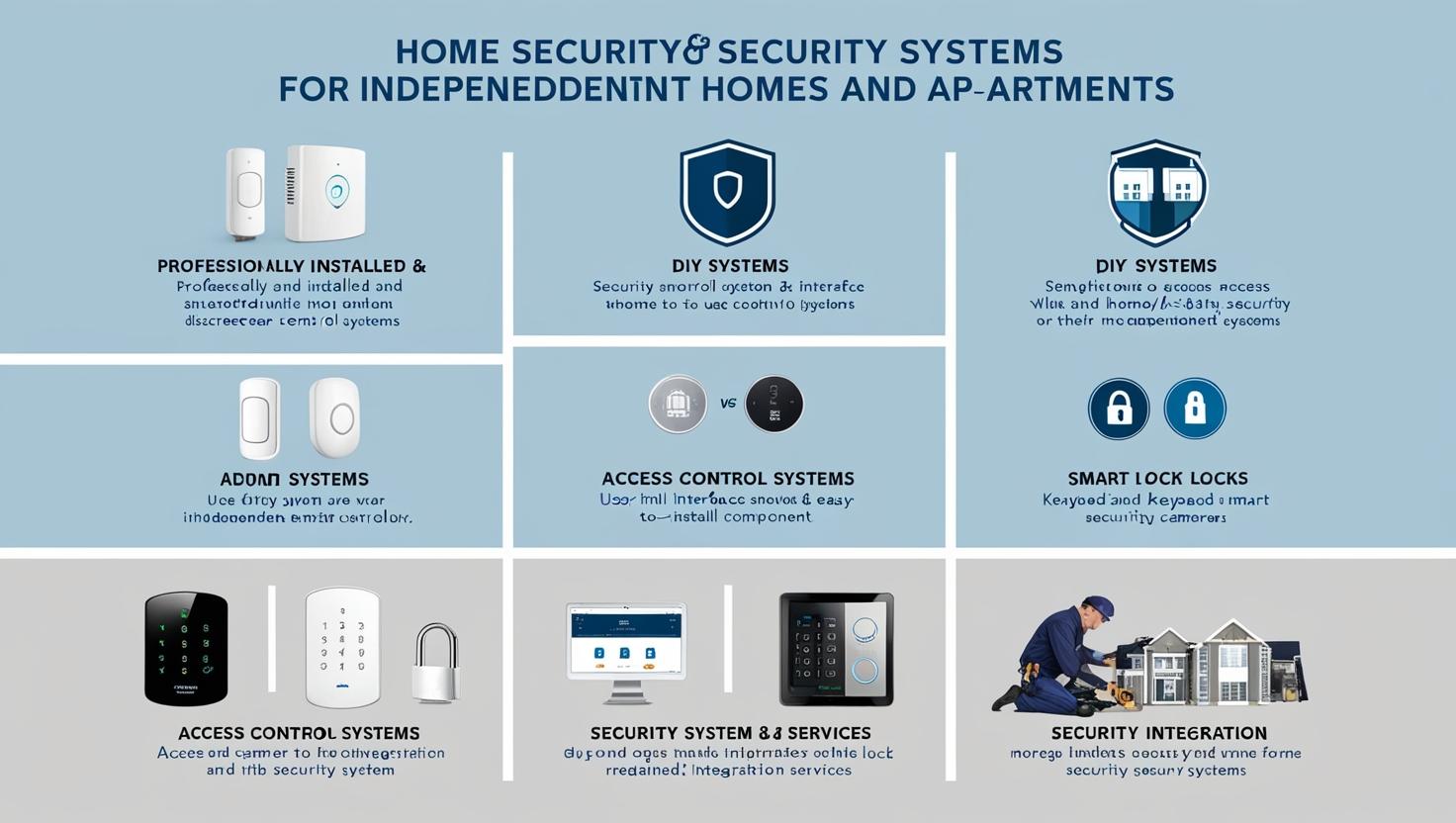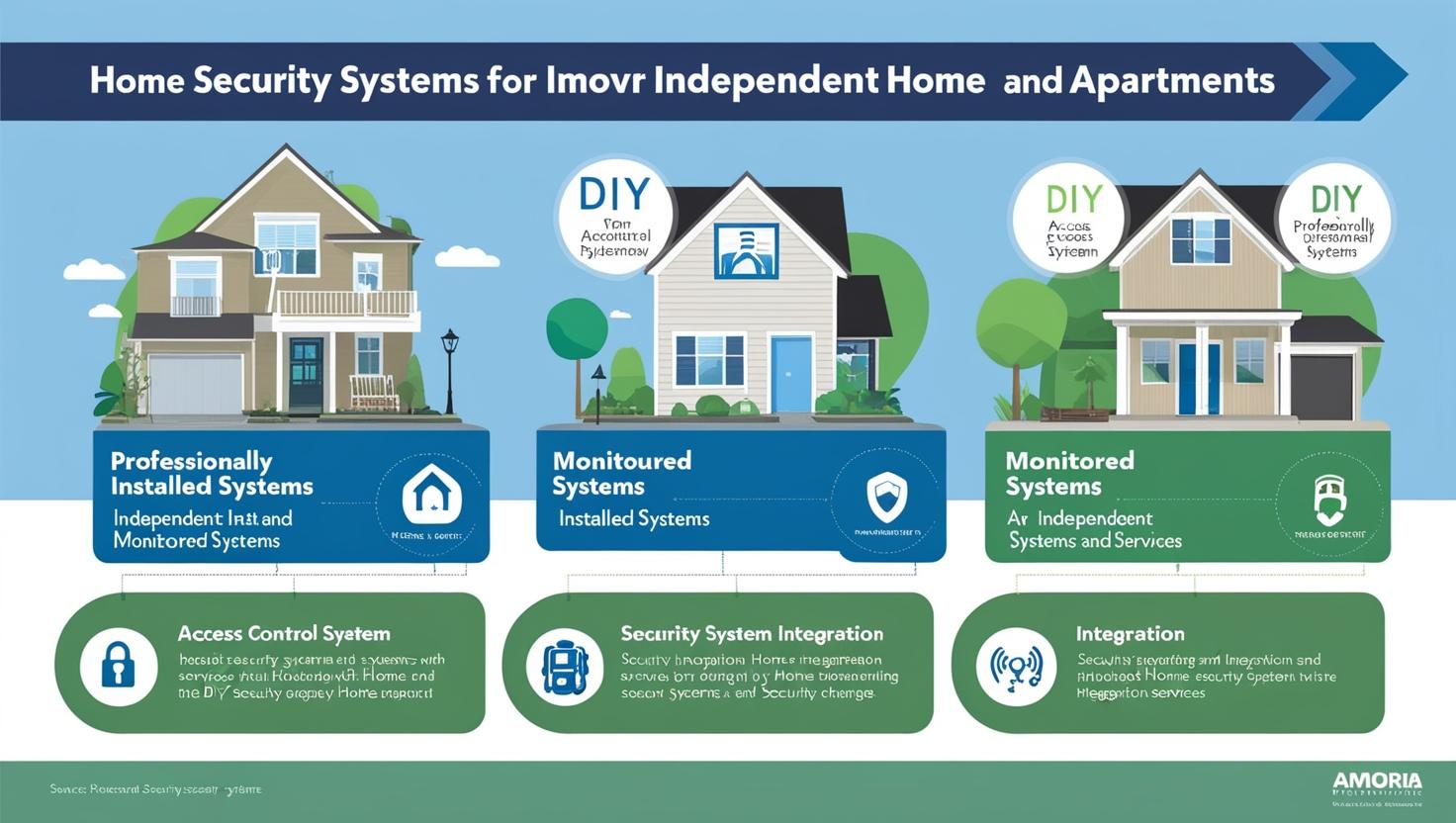The landscape of home security is undergoing a significant transformation. With the rise of artificial intelligence (AI), smart technologies are making home security systems smarter, more efficient, and more intuitive than ever before. The traditional home security systems of the past—comprising simple alarm systems, locks, and surveillance cameras—are being replaced by highly sophisticated, AI-powered solutions that offer enhanced safety, convenience, and control.
This article explores the future of home security systems, how AI technology is driving these changes, and what we can expect as these innovations continue to evolve.
AI and the Evolution of Home Security
Historically, home security systems were built on the premise of deterring intruders with alarms, motion sensors, and cameras. These systems focused primarily on detection and alerting homeowners in case of an emergency. However, these basic security measures often resulted in a high volume of false alarms, a lack of actionable data, and limited automation.
With the advent of AI, the capabilities of home security systems have evolved. AI integrates deep learning, computer vision, data analytics, and machine learning to enable systems to not only monitor homes more effectively but also respond intelligently to emerging situations.
AI enables systems to learn from past events, adapt to new environments, and predict potential threats before they occur. This represents a fundamental shift in how we approach home security—moving from reactive systems to proactive, intelligent solutions that enhance both safety and peace of mind.
Global home security systems market size
The global home security systems market size is expected to grow from USD 56.9 billion in 2022 to USD 84.4 billion by 2027, at a CAGR of 8.2% during the forecast period.
How AI Enhances Home Security
The integration of AI into home security systems allows for the development of smarter, more personalized solutions. Here are some key ways AI is enhancing home security:
1. Real-time Threat Detection and Recognition
One of the most significant advancements in home security systems powered by AI is the ability to detect and recognize potential threats in real-time. Traditional security cameras may simply capture footage of an intruder, but AI-enabled cameras are equipped with computer vision capabilities that allow them to analyze and interpret the visual data in real-time.
AI-powered cameras are now able to distinguish between normal and suspicious activity. For instance, they can recognize the difference between a person walking past a house and someone trying to break in, sending alerts only when something genuinely threatening occurs. They can also differentiate between humans, animals, and even vehicles, dramatically reducing false alarms and increasing the accuracy of the system.
2. Facial Recognition and Smart Identification
Facial recognition is one of the most talked-about AI-powered security features in modern home security systems. By using facial recognition technology, AI-enabled systems can identify individuals approaching your door, allowing for contactless access control.
For example, when a resident or trusted visitor approaches, the system will recognize their face and automatically unlock the door. This eliminates the need for traditional keys or even PIN codes. In addition to enhancing security by allowing only authorized people to enter, it also provides a high level of convenience, enabling hands-free access for residents.
AI-powered facial recognition can also enhance visitor management by identifying strangers or unknown visitors, notifying homeowners of their presence, and enabling them to choose whether to allow or deny access.
Download PDF Brochure @ https://www.marketsandmarkets.com/pdfdownloadNew.asp?id=205573901

3. Predictive Analytics for Threat Prevention
AI in home security systems doesn’t just respond to incidents—it anticipates them. Using predictive analytics, AI systems can learn from historical data, identify patterns, and assess risk factors in real-time to predict potential security breaches.
For instance, an AI-powered home security system can analyze factors like the time of day, local crime statistics, and user behavior to predict when an intrusion might occur. If the system detects unusual patterns, such as multiple strangers approaching the property at night or a sudden spike in local crime rates, it can preemptively notify the homeowner and even initiate proactive measures like activating additional security features.
4. Voice Assistance Integration
Integrating voice assistants into home security systems allows homeowners to control and monitor their security systems more easily. Many home security systems are now compatible with popular voice assistants like Amazon Alexa, Google Assistant, and Apple Siri, enabling voice commands for tasks such as arming the system, checking camera feeds, or locking doors.
With AI, these voice assistants are becoming even smarter. For instance, they can understand contextual voice commands and respond intelligently, such as distinguishing between a request to “unlock the door” from a voice command given by an intruder trying to force entry. These voice-activated systems are also able to engage emergency responders if they detect distress words or commands during conversations.
5. AI-Powered Automation and Smart Integration
AI-driven home security systems are increasingly becoming part of the broader smart home ecosystem. Integration with other smart devices like lighting systems, thermostats, and smart locks allows the security system to adjust its behavior based on specific situations.
For example, if the system detects that everyone has left the house, it can automatically activate security measures, such as locking all doors, turning on lights to simulate the presence of people, and adjusting the thermostat. Similarly, if it detects an intruder or suspicious behavior, it can trigger alarms, lock doors, and alert the homeowner via their smartphone or another device.
Such automation offers peace of mind to homeowners, ensuring that their homes are secure even when they’re away or distracted.
6. AI and IoT-Enabled Surveillance Systems
The Internet of Things (IoT) is another technology that, when combined with AI, enhances home security systems. By connecting various smart devices, such as cameras, sensors, and alarms, into a cohesive network, homeowners gain more control over their property’s security.
For example, an IoT-enabled AI security system can integrate video surveillance with motion sensors, door/window sensors, and even smart locks. When any unusual activity is detected—whether it’s motion in an unexpected location or an open window—the system can take immediate action, such as capturing images, activating an alarm, or sending real-time notifications to the homeowner’s smartphone.
Moreover, AI can assess the data from different devices in real-time, enabling faster and more accurate decision-making.
Challenges and Considerations for AI-Driven Home Security
While the potential for AI in home security is vast, there are several challenges to consider:
-
Privacy Concerns: The use of AI-powered surveillance cameras and facial recognition technology raises privacy concerns. The continuous monitoring of video footage and personal data must comply with stringent privacy regulations to ensure that individuals’ rights are respected.
-
High Initial Costs: AI-based home security systems are typically more expensive than traditional systems due to the advanced technology they incorporate. This may limit access for certain demographics. However, as technology matures, prices are expected to come down.
-
Cybersecurity Risks: As more devices become interconnected, the risks of cyberattacks increase. Ensuring that AI-powered security systems are well-protected from hacking attempts is critical to maintaining the integrity of the system.

The Future of AI in Home Security
The future of AI in home security systems looks incredibly promising. As AI technology continues to evolve, home security systems will become even more sophisticated, offering unparalleled levels of protection, convenience, and automation. These systems will be more intuitive, smarter, and capable of preventing security breaches before they occur.
Moreover, as more homes adopt smart devices and IoT integration, the boundaries of home security will expand. The focus will shift from simply reacting to threats to preventing them in real-time, leveraging AI’s predictive capabilities.
As the cost of AI technology decreases and privacy concerns are addressed, we can expect widespread adoption of AI-driven security systems that are not only effective at keeping intruders out but also providing valuable insights and peace of mind for homeowners.
AI technology is rapidly transforming the way we think about home security. By integrating machine learning, computer vision, and IoT connectivity, AI-powered home security systems are more proactive, efficient, and responsive than ever before. These innovations promise a future where homes are smarter, safer, and more intuitive, offering enhanced protection, convenience, and control.
As AI continues to evolve, the possibilities for home security are endless—paving the way for homes that are not just secure, but intelligent and capable of anticipating and preventing threats before they even arise. The future of home security is here, and it’s powered by AI.
FAQ: The Future of Home Security Systems with AI Technology
1. What is AI technology in home security?
AI technology in home security refers to the integration of artificial intelligence into security systems such as cameras, alarms, locks, and sensors. It enables systems to recognize patterns, learn from past events, and make real-time decisions to enhance safety and reduce false alarms. AI-powered systems can also predict and prevent potential threats.
2. How does AI improve the accuracy of home security systems?
AI improves the accuracy of home security systems by analyzing data from surveillance cameras, motion sensors, and other devices. With AI-powered algorithms, the system can distinguish between regular activity (e.g., a pet moving) and suspicious behavior (e.g., an intruder), minimizing false alarms and ensuring that only real threats trigger notifications.
3. What role does facial recognition play in home security?
Facial recognition in home security systems enables the identification of individuals approaching a property. AI-powered cameras can scan faces and grant or deny access accordingly. This technology allows for contactless entry and helps in identifying intruders or unauthorized visitors.
4. Can AI systems predict potential threats?
Yes, AI systems can predict potential threats by analyzing historical data and identifying patterns. Using predictive analytics, AI can detect unusual activities and send alerts to homeowners before a security breach occurs. This proactive approach enhances the overall security of the home.
5. What are the privacy concerns with AI-powered home security systems?
Privacy concerns with AI-powered home security systems stem from the continuous monitoring and data collection of individuals’ movements and activities. Some systems use facial recognition, which raises concerns about surveillance and unauthorized data storage. It’s essential to ensure that these systems comply with privacy laws and guidelines to protect personal data.
6. Are AI home security systems expensive?
AI-based home security systems can have higher upfront costs due to the advanced technology involved. However, as AI technology continues to evolve and become more widespread, the cost of these systems is expected to decrease. Over time, the efficiency and effectiveness of AI security systems can lead to cost savings by reducing incidents and false alarms.
